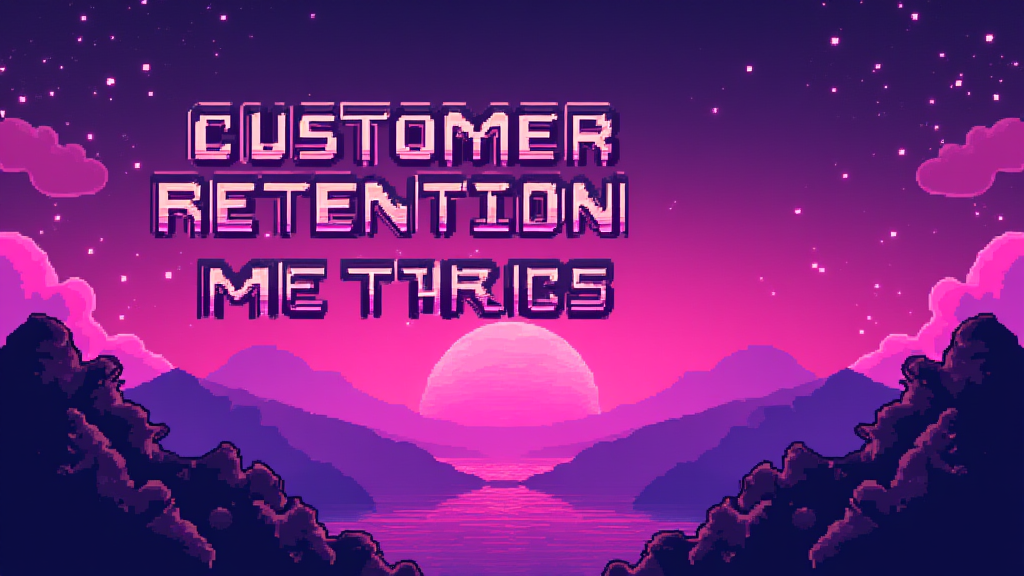Customer Retention Metrics: Measuring Loyalty

Published on: October 01, 2024
Customer Retention Metrics are essential tools used by businesses to measure and analyze how well they're keeping their existing customers over time. These metrics provide valuable insights into customer loyalty, satisfaction, and the overall health of a company's customer base. 📊
Why Customer Retention Metrics Matter
In the world of Sales, Marketing, and Revenue Operations, customer retention metrics play a crucial role in:
- Assessing the effectiveness of customer loyalty programs
- Identifying potential churn risks
- Guiding strategic decisions to improve customer satisfaction
- Forecasting revenue and growth
Understanding and tracking these metrics is particularly important in subscription-based businesses, such as SaaS companies, where customer lifetime value is a key driver of profitability. 💼
Key Customer Retention Metrics
Let's explore some of the most important customer retention metrics:
1. Customer Retention Rate (CRR)
The Customer Retention Rate measures the percentage of customers a company retains over a specific period. It's calculated using the following formula:
$CRR = \frac{(E - N)}{S} \times 100\%$
Where:
E = Number of customers at the end of the period
N = Number of new customers acquired during the period
S = Number of customers at the start of the period
2. Customer Churn Rate
The Customer Churn Rate is the percentage of customers who stop doing business with a company over a given period. It's essentially the opposite of the retention rate:
$Churn Rate = 1 - Customer Retention Rate$
3. Net Promoter Score (NPS)
NPS measures customer loyalty and satisfaction by asking customers how likely they are to recommend the company to others on a scale of 0-10. Customers are then categorized as Promoters (9-10), Passives (7-8), or Detractors (0-6).
$NPS = \% of Promoters - \% of Detractors$
4. Customer Lifetime Value (CLV)
CLV predicts the total revenue a business can expect from a single customer account throughout their relationship. It helps in determining how much to invest in retaining customers.
$CLV = Average Purchase Value \times Purchase Frequency \times Customer Lifespan$
Comparing Customer Retention Metrics
| Metric | What it Measures | Ideal Trend |
|---|---|---|
| Customer Retention Rate | Percentage of customers kept | Higher is better |
| Customer Churn Rate | Percentage of customers lost | Lower is better |
| Net Promoter Score | Customer loyalty and satisfaction | Higher is better |
| Customer Lifetime Value | Total expected revenue from a customer | Higher is better |
Challenges in Measuring Customer Retention
While customer retention metrics are invaluable, there are some challenges to consider:
- Data accuracy: Ensuring clean, up-to-date customer data is crucial for accurate measurements.
- Time frame selection: Choosing the right period for measurement can significantly impact results.
- Industry variations: Different industries may have varying benchmarks for what constitutes good retention.
- Customer segmentation: Not all customers are equal; segmenting metrics by customer type can provide more actionable insights.
Improving Customer Retention
To boost customer retention metrics, consider implementing these strategies:
- Develop a robust onboarding process 🚀
- Provide excellent customer support 🎧
- Implement a customer feedback loop 🔁
- Offer loyalty programs or incentives 🏆
- Personalize customer experiences 🎨
- Continuously improve your product or service 📈
By focusing on these areas, businesses can work towards improving their customer retention metrics and, ultimately, their bottom line.
Implementing Customer Retention Metrics in Your Stack
As you consider implementing or improving your customer retention metrics, ask yourself these questions:
- Which customer retention metrics are most relevant to our business model?
- Do we have the necessary tools and systems in place to accurately track these metrics?
- How often should we measure and review our customer retention metrics?
- What benchmarks should we set for each metric based on our industry and business goals?
- How can we integrate these metrics into our decision-making processes across sales, marketing, and customer success teams?
By answering these questions, you'll be well on your way to leveraging customer retention metrics to drive growth and success in your organization. 🚀

















